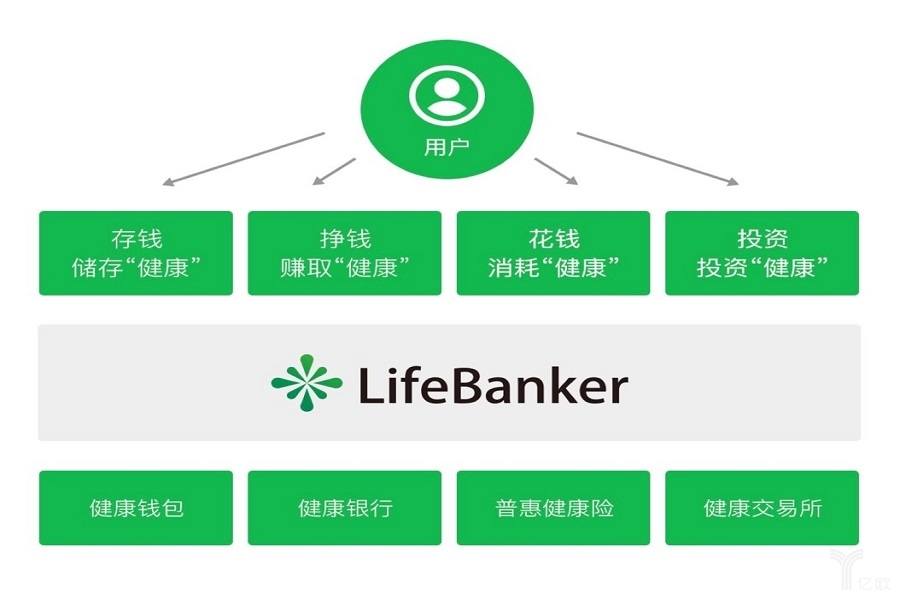LifeBanker Xia Li: With the help of blockchain technology, the medical industry is no longer "painful"

Since the 5G, unmanned, AI and other vents, the blockchain has become the next wave of high-profile. It is reported that the blockchain has three layers of value. From a technical point of view, the blockchain is a distributed database, which makes the big data, cloud computing, and sharing economy have a foundation, and the data will not be tampered with and deleted; from the perspective of the Internet, The blockchain is the next generation Internet (also known as the value Internet), which conveys rights and values. In addition, the blockchain represents a new economic governance structure that subverts the former corporate-centric form. It bundles the interests of the company's shareholders, employees, partners, customers, and users to form a consensus community and build a community economy.
At present, the blockchain is not only a technological change, but its application scenarios have also been explored in multiple dimensions, and many applications have landed. In the blockchain market, the financial industry is seen as the first application scenario, with government ranking second, and the third is the medical health industry. Focusing on the health care industry, LifeBanker is building a distributed health financial blockchain platform that reconnects health-related industries such as medical institutions, health insurance, and doctors' groups based on health care big data to form sports, health, security, medical care, and rehabilitation. The positive cycle creates a healthy financial ecosystem for Pratt & Whitney. Therefore, the reporter also conducted an exclusive interview with LifeBanker CEO Xia Li.
In Xia Li's view, with the aging, air pollution, environmental pollution, work pace and technology changes, the current domestic medical industry has three major problems. First, the incidence rate continues to rise, and the development of younger, especially the incidence of major diseases. Second, medical expenditures have increased year by year, and the cost of medications and equipment is getting higher and higher. Relevant data show that the proportion of global medical health expenditure to GDP has increased from 8.5% in 1995 to 9.9% in 2014. Continued growth. The proportion of medical expenditures in GDP in low-income countries has risen even faster. Third, the distribution of medical information resources is scattered, and various medical platforms for various medical platforms make it difficult for users to obtain complete resources and information asymmetry, which makes users unable to choose. LifeBanker will focus on blockchain + health + medical, with blockchain technology, break the boundaries of information, help users get healthy, and reach the right medical resources in the first time to solve the pain points of the medical health industry. â€
Establishing the Pratt & Whitney Medical Platform to solve the pain points in the medical and health industry
Unlike traditional medicine, the blockchain maximizes the direct appeal and conflict of interest between doctors and patients. According to Xia Li, LifeBanker wants to build a distributed Pratt & Whitney medical financial blockchain platform, which will restructure the structure between hospitals, doctors, patients, insurance, pharmaceutical companies, and enterprise manufacturers to achieve "consensus" benefits. And re-allocate funds in a very reasonable and legal way. Currently, Lifebanker distributes services to users through smart contracts in the form of a promised service. As a DAPP on the LifeBanker platform, the medical mutual insurance provides users with customized “Puhe Health Insuranceâ€. Users can form a one-to-one communication with doctors by joining their own protection plans, effectively solving the problem between doctors and users. Direct appeal.
In addition to insurance, LifeBanker also hopes to help people improve their exercise habits by means of blockchain technology incentives. Users can record sports, upload case reports, watch popular science articles or interact with doctors, and users can get relevant figures. Revenues such as currency use the blockchain technology incentive mechanism to help users prevent disease and reduce the probability of illness.
Docking diverse medical resources to solve users "difficult to see a doctor"
The medical industry is very deep in water, and the stakeholders are very complicated. The government, insurance, hospitals, medical equipment , doctors, patients, etc., have also created a closed loop of resources, information is not equal, and the situation is "no way to see a doctor." However, there are characteristics that data cannot be falsified and the production relationship of each resource element can be reconstructed. The blockchain technology can maximize the coexistence of resource sharing funds in the medical and health industry, and solve the problem that people pay most attention to.

Xia Li said: "LifeBanker uses blockchain technology as the grassroots layer; in the doctor's side, the doctors' mutual insurance and the Concord Medical Doctor Group, the top three doctors' group signed a cooperation agreement, about 40,000 doctors nationwide, 120,000 paid users on our platform. Last year, we may probably go to docking about 50 to 100 mainstream doctors and doctors' groups to develop medical resources. Next we will establish this kind of insurance with medical devices and pharmaceutical companies, and equipment and pharmaceutical companies are also the largest. The market, or the biggest pain point."
Blockchain technology is still in the early stage of development, and there are risks and shortcomings in terms of policy, technology and ability to land. It has not yet been recognized and affirmed by the public, but if big data is regarded as production data, artificial intelligence is productivity. A blockchain is a production relationship that reorganizes the relationship of production resources.
When talking about the status quo of China's blockchain development, Xia Li said: "Now the Chinese government has given an enlightened policy to the blockchain, and various localities have begun to set up industrial parks, and even industrial funds have helped China's development in the blockchain. China Blockchain technology is currently in the forefront of the world and has advantages over other countries. The large-scale application of blockchains in the future will certainly occur in China." Then, under this soil, how will LifeBanker achieve "blocks"? The true landing of chain + health + finance? What subversion will the future bring to the industry? let us wait and see!
Antigen Sars Poct Test,Sars-Cov-2 Antigen Test,Covid-19 Antigen Rapid Test,Covid-19 Igg Igm Antibody Test
Wuxi BioHermes Bio & Medical Technology Co., Ltd. , https://www.biohermesglobal.com
